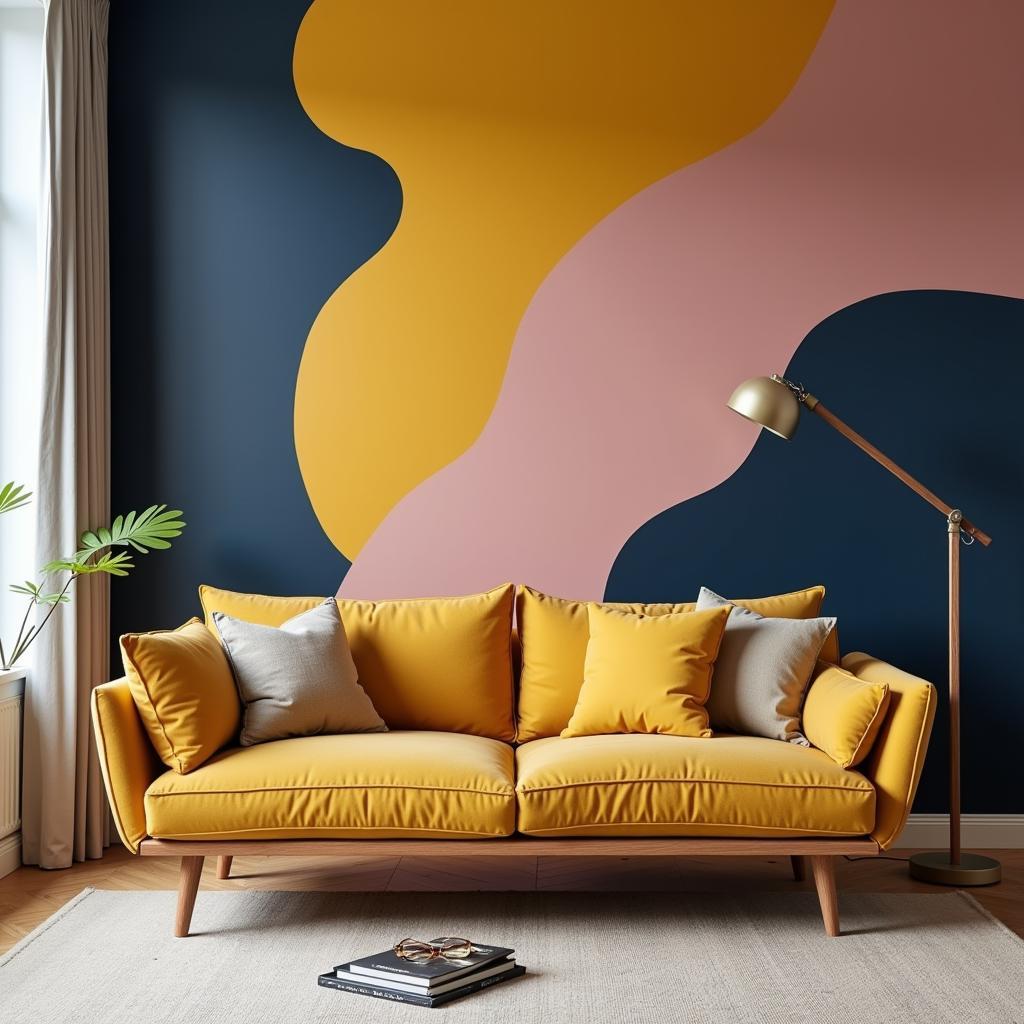Painting a room with two colors can add depth, interest, and personality to your space. Whether you’re looking to create a bold statement or a subtle accent, understanding the techniques and principles of two-tone painting is key to achieving a professional and visually appealing result. This guide will walk you through the process, offering expert tips and tricks to help you transform your room into a stylish haven.
Similar to how to paint a room 2 colors, achieving a flawless two-tone paint job requires careful planning and execution. The first step is deciding on your color palette. Consider the room’s function, lighting, and existing décor. Do you want complementary colors that create a vibrant contrast, or analogous colors for a more harmonious feel? Perhaps you’re drawn to a monochromatic scheme with varying shades of the same color.
Choosing the Right Color Combination
Selecting the right color combination is crucial for a successful two-tone paint job. Explore various color palettes and consider the mood you want to create. Warm colors like reds, oranges, and yellows can evoke energy and excitement, while cool colors like blues, greens, and purples promote tranquility and relaxation. Don’t be afraid to experiment with different shades and tints to find the perfect balance.
What colors make burgundy paint, you ask? Burgundy is a complex color achieved by mixing red and brown, often with a touch of blue or black. Understanding the underlying tones of your chosen colors will help you create a cohesive and balanced look.
Understanding Color Psychology
Color psychology plays a significant role in how we perceive a space. For example, a bright yellow accent wall can inject a sense of optimism into a room, while a calming blue can create a serene atmosphere. Think about how you want to feel in the space and choose colors that align with your desired mood.
Techniques for Two-Tone Painting
There are several techniques you can use to paint a room with two colors. Each method offers a unique aesthetic and can be adapted to suit your personal style.
Horizontal Division
This classic technique involves dividing the wall horizontally, often with the lower portion painted in a darker shade and the upper portion in a lighter shade. This method can create a sense of grounding and make the ceiling appear higher.
Accent Walls
Painting one wall a different color from the others is a popular way to add a focal point to the room. This technique can highlight architectural features or create a backdrop for furniture and artwork.
This approach aligns with the principles discussed in how to get my colors done. It emphasizes the importance of thoughtful color placement to enhance the overall design.
Color Blocking
Color blocking involves creating geometric shapes or patterns with different paint colors. This bold technique can add a modern and artistic touch to your space.
 Color Blocking Wall Design Ideas
Color Blocking Wall Design Ideas
Stripes and Other Patterns
Adding stripes or other patterns to your walls can create a unique and personalized look. You can use painter’s tape to create crisp lines and achieve a professional finish.
For those interested in learning what is value in colors, understanding color value is essential for creating depth and dimension in your two-tone paint project.
Preparing for Your Painting Project
Before you begin painting, it’s essential to properly prepare the walls. This includes cleaning the surfaces, filling any holes or cracks, and applying primer. Proper preparation ensures a smooth and even finish. If you are unsure how to color match paint on the wall you can learn more from our expert advice in how to color match paint on wall. This resource can help ensure color consistency throughout your project.
Conclusion
Painting a room with two colors can be a rewarding DIY project that transforms your space. By following these tips and choosing the right color combination, you can create a room that reflects your personal style and enhances your home’s aesthetic appeal. Remember, the key is to plan carefully, prepare thoroughly, and execute with precision.
FAQs
- What is the best way to create a crisp line between two colors?
- Can I use two different finishes of paint in the same room?
- What type of paint is best for accent walls?
- How do I choose colors that complement each other?
- How much paint do I need for a two-tone paint job?
- Can I paint over existing wallpaper?
- What are some common mistakes to avoid when painting with two colors?
Need more help? Contact us at Phone Number: 0373298888, Email: [email protected] Or visit us at: 86 Cau Giay, Hanoi. We have a 24/7 customer service team.

